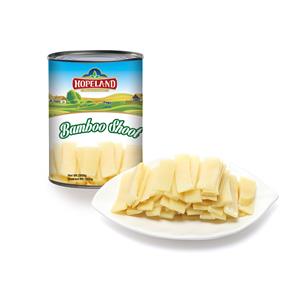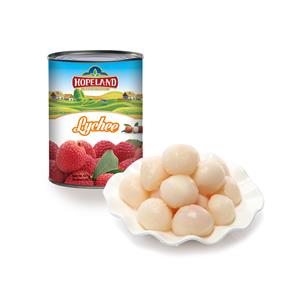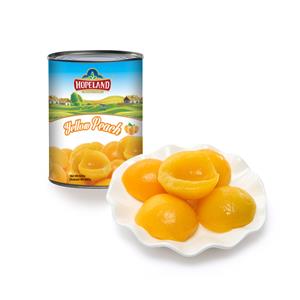How to Store Canned Beans, and Danger Signs to Look For
Canned beans are among the most convenient, nutritious, and versatile pantry staples you can keep at home. Whether you rely on chickpeas for hummus, black beans for burrito nights, or kidney beans for hearty stews, canned beans provide protein, fiber, and essential nutrients with almost zero prep time. Their long shelf life and low cost make them ideal for everyday cooking as well as emergency preparedness.
But even though canned foods are remarkably stable, they are not indestructible. Storing canned beans correctly helps preserve their quality, taste, texture, and safety. Understanding what danger signs to look for is equally important—because compromised cans can pose genuine food-safety risks. This guide explains in depth how to store canned beans, how long they last, how to manage an organized pantry, and how to recognize cans and beans that should never be consumed.

1. Why Proper Storage Matters
Canned foods are processed using high heat to eliminate microorganisms and create a vacuum seal that keeps air and contaminants out. As long as the seal remains intact and the can is stored correctly, canned beans can remain safe for years. However, extreme temperatures, moisture, or physical damage can weaken a can’s integrity. Improperly stored cans may bulge, corrode, or leak—opening the door to spoilage bacteria or even dangerous pathogens like Clostridium botulinum, the organism associated with botulism.
Proper storage doesn’t just prevent safety issues—it helps maintain the quality of the beans. Beans stored in a hot garage may still be safe for a while, but the high heat will gradually degrade color, flavor, aroma, and texture. Cans kept in damp locations can rust, and if corrosion progresses enough, it can eventually create pinholes that break the sterile barrier.
In short: storing canned beans correctly is simple but essential.
2. Best Practices for Storing Unopened Canned Beans
2.1 Keep them in a cool, dry place
This is the golden rule. The ideal storage temperature for canned goods—including beans—is between 50°F and 70°F (10°C–21°C). Most household pantries, cupboards, or shelving units fit this requirement.
Avoid storing canned beans in:
Garages exposed to summer heat
Car trunks
Attics
Crawl spaces
Uninsulated outdoor storage
Very humid basements
Heat accelerates deterioration, and humidity leads to corrosion. A cool, dry environment extends shelf life and ensures safety.
2.2 Avoid direct sunlight
Sunlight affects temperature and can heat cans unevenly. Additionally, UV exposure over long periods may degrade the can lining and nutrients. Store canned beans away from windows or uncovered shelving exposed to light.
2.3 Keep cans off the floor
Placing cans directly on the floor—especially concrete—exposes them to moisture and fluctuating temperatures. Use shelves, pallets, or even a simple plastic mat to create separation.
2.4 Rotate inventory using FIFO
FIFO stands for “First In, First Out.”
Place newly purchased cans at the back of the shelf.
Move older cans forward.
Check the date code when building meals or stocking new supplies.
This helps you use older products before they lose quality.
2.5 Check cans occasionally for damage
Even stored in perfect conditions, cans can develop issues over time. Give your pantry a check every couple of months.
Look for:
Rust
Dents
Leaks
Swelling
If something looks off, set that can aside to evaluate closely.
3. How Long Can You Store Unopened Canned Beans?
Most canned beans come with a "Best By" or "Best Before" date printed on the lid or bottom. This date indicates peak quality—not safety. Unopened canned beans often remain edible for 2 to 5 years past the date, and many last even longer if stored correctly.
However, quality gradually decreases:
The beans may darken in color.
Texture may soften.
Flavor may become dull.
But safety is tied to the condition of the can, not the printed date. A can in perfect condition is usually safe long after its “best by” date; a damaged can, even brand-new, may be unsafe.
4. How to Store Canned Beans After Opening
Once a can is opened, the sterile environment disappears. The beans must be treated like any fresh food.
4.1 Never store opened beans in the original can
Although not inherently dangerous for short periods, storing food in an opened metal can can cause:
Metallic flavors
Darkening of the beans
Chemical interactions with air and the can lining
Instead, transfer the beans (including the liquid, if you plan to keep it) to an airtight container—preferably glass or food-grade plastic.
4.2 Refrigeration guidelines
Refrigerate immediately after transferring to a container. Opened canned beans will last:
3–4 days in the refrigerator
If you won’t finish them in that time, freeze them.
4.3 Freezing canned beans
Beans freeze very well.
To freeze:
Rinse and drain (optional—depends on intended use).
Portion into freezer-safe bags or containers.
Add a little cooking liquid or clean water to prevent drying.
Label with date.
Frozen beans maintain best quality for 2–3 months, though they remain safe longer.
5. Danger Signs That a Can of Beans Is Unsafe
This is the most crucial part of storing canned goods. A compromised can is not worth the risk. When it comes to foodborne illness—especially botulism—err on the side of caution.
5.1 Bulging cans (top or bottom)
A bulging can is a major red flag. Swelling indicates gas buildup, which usually means bacterial activity inside. Botulism-producing bacteria create gas, so any swollen can should be discarded immediately.
5.2 Leaking cans
If liquid is oozing or dried residue is present, the can’s seal has been breached. A leak always means contamination. Discard it.
5.3 Severe dents, especially along seams
Not all dents are dangerous. But dents near the top or bottom seams—where the seal is located—can weaken the structure and allow bacteria to enter. Deep, sharp, or seam dents should be considered unsafe.
5.4 Rust and corrosion
Surface rust is sometimes harmless, but heavy rust that flakes off or penetrates the metal can create tiny holes. Corrosion also compromises the can’s structural integrity. If rust is widespread or rough to the touch, discard the can.
5.5 Off smells after opening
Even if a can looks fine externally, always smell the beans after opening.
Warning signs include:
Sour aroma
Musty odor
Chemical smell
Anything unpleasant or unexpected
Spoiled canned beans often smell foul. When in doubt, throw it out.
5.6 Foaming or spurting liquid upon opening
If the beans spray, foam, or release a strong burst of gas upon opening—beyond the normal soft “pop” of the vacuum seal—this suggests bacterial activity.
5.7 Mold inside the can
Any visual mold means contamination. Even if the mold appears only on the surface, unseen bacteria may have spread throughout.
5.8 Blackened or discolored beans
Beans naturally vary in color, and some darkening is normal with age. But odd colors—such as:
Black specks (not typical for the bean type)
Bright or unusual hues
Patchy discoloration
—can indicate spoilage or chemical reactions.
5.9 A strange metallic or chemical taste
This usually appears only after cooking or tasting, which is risky if the food is spoiled. If something tastes “off,” spit it out immediately and discard the rest.
6. Safety Tips When Discarding Damaged Cans
If you find a can with dangerous signs, handle it safely.
6.1 Do not open a swollen can
Opening a bulging can may expose you to aerosolized toxins or contaminated liquid. Instead:
Wear gloves.
Place the can in a sealed bag.
Dispose of it according to local waste guidelines.
6.2 Avoid composting spoiled canned beans
Spoiled or contaminated beans should never go into compost. Botulism spores can persist.
6.3 Clean any surfaces the leaked liquid touched
Use hot, soapy water followed by a disinfectant.
7. Organizing Your Pantry for Maximum Shelf Life
An organized pantry is not just visually satisfying—it directly impacts food safety and quality.
7.1 Use labelled shelves or zones
Categorize your canned goods:
Beans
Vegetables
Fruits
Soups
Proteins
Grouping similar items helps keep track of quantities.
7.2 Store cans in single rows when possible
Layering cans behind each other can cause forgotten items to expire or deteriorate unnoticed. Instead, store in single rows or use risers so everything is visible.
7.3 Track purchase dates
If the “best by” date is printed in coded form, label cans with a sticker showing the purchase month and year.
7.4 Use stackable racks or can dispensers
These keep rotation simple and prevent heavy cans from crushing weaker ones.
8. Frequently Asked Questions About Storing Canned Beans
8.1 Can I store canned beans in my car for emergency use?
Not recommended. Cars experience extreme temperature changes—hot enough to cause spoilage or break the seal.
8.2 What if a can is dented but not at the seams?
Small dents on the body of the can—not affecting the seams—are generally safe, but the contents may degrade slightly faster.
8.3 What if a can “pings” or makes a noise when pressed?
Some movement is normal for thin-walled cans. However, a soft or flexible top may indicate a weakened vacuum. When in doubt, discard it.
8.4 Are beans safe to eat after the expiration date?
If the can is in perfect condition, yes. Canned beans often last years past the date. Just expect some change in color or texture.
8.5 Should I wash canned beans before storing them?
No need. But wiping dust off is fine.
8.6 Is it safe to store canned beans in metal racks?
Yes, as long as the area is dry and free from moisture that could cause rust.
9. Final Tips for Long-Term Storage
If you’re storing large quantities of canned beans—for emergency preparedness or bulk buying—follow these extra suggestions:
Keep storage areas below 75°F (24°C) for the best long-term results.
Avoid storing near appliances that emit heat (ovens, dishwashers, water heaters).
Use airtight bins or plastic containers if rodents are a concern.
Check your stock every 3–6 months.
If using canned beans as part of a survival pantry, supplement them with other shelf-stable essentials like rice, pasta, canned tomatoes, and spices to create balanced meals.
10. Conclusion
Canned beans are a reliable, affordable, and nutritious food, but their safety depends on proper storage. Keeping your cans in a cool, dry, organized space can significantly extend their shelf life and help maintain quality. Equally important is knowing what danger signs to look for—bulging cans, leaks, rust, odd smells, or unusual foaming can all indicate contamination.
A few simple habits—rotating stock, monitoring temperatures, transferring opened beans to airtight containers, and inspecting cans periodically—go a long way toward ensuring that every can you open is safe and delicious.
With the right storage practices, you can enjoy the convenience of canned beans while minimizing waste and maximizing safety for your household.




